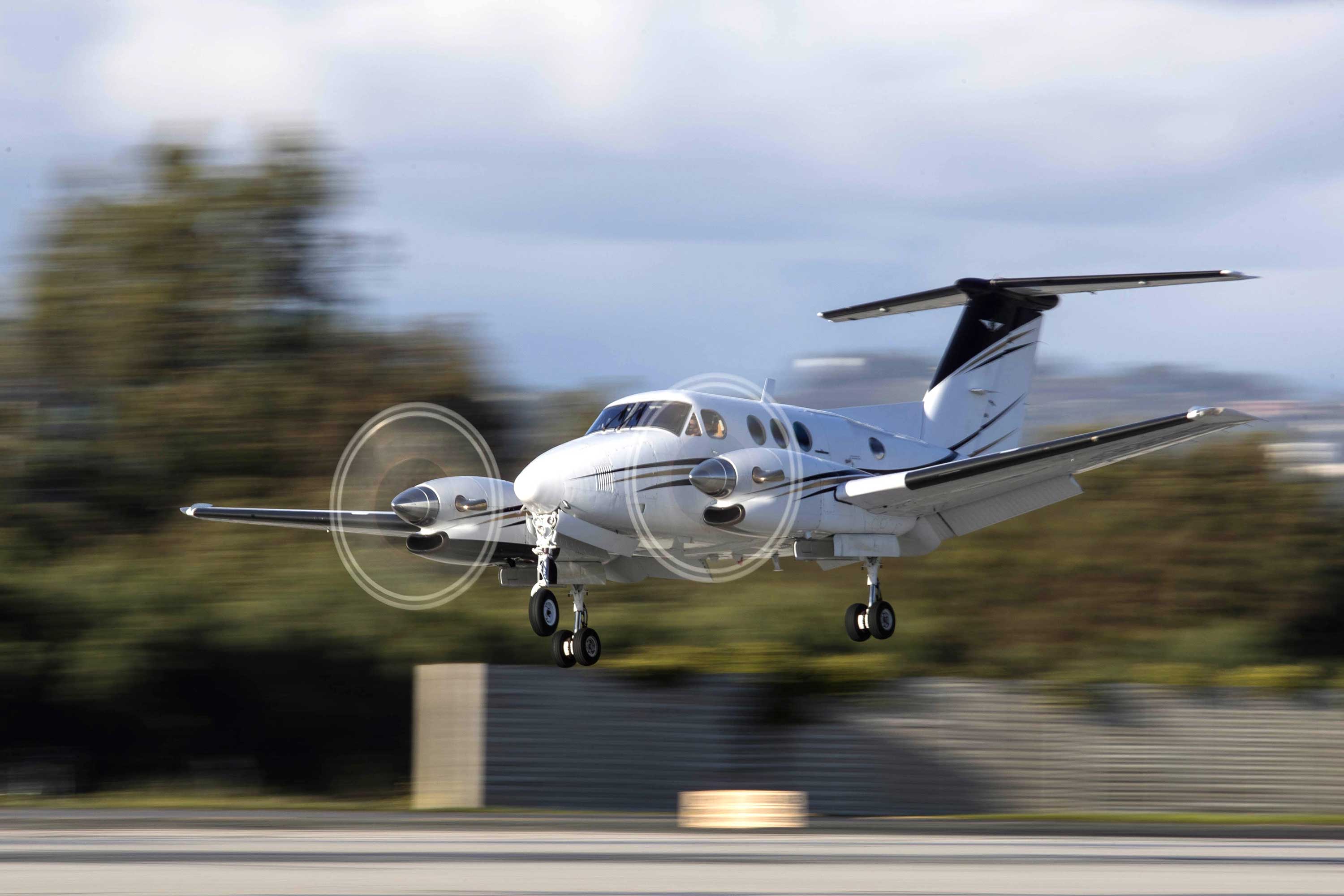
The Leadership Objective focuses on management issues related to the operation of aircraft to ensure safe and efficient service.
The following NBAA Professional Development Program (PDP) objectives were adopted July 15, 2020.
Operations Objective 1 (Ops1)
Develop and manage a set of Standard Operating Procedure (SOP) documents.
- Identify applicable topics and sources of information (e.g., Original Equipment Manufacturer [OEM] handbooks, Aeronautical Information Manual, Safety Management System [SMS], company and regulatory requirements, Flight Operations Manual, Dispatch Manual)
- Compose and implement applicable SOPs with stakeholder support
- Review operational results for compliance with SOPs and identification of needed revisions
Operations Objective 2 (Ops2)
Ensure that procedures are in place to plan and conduct safe and efficient flight.
- Manage practices to optimize aircraft and crew utilization (e.g., duty time/crew fatigue, positioning legs, crew augmentation, supplemental lift options, aircraft availability status)
- Prepare trip plan and related documents (e.g., National Airspace System [NAS] considerations, weather, fuel, Fixed Base Operator [FBO] selection, customs, special airspace and airports, international trip requirements, special corporate events, electronic flight devices)
- Review and explain operational control designation for the leg(s)
- Interpret and apply company policies for trip plan (e.g., insurance, training, business continuity, noise abatement)
- Predict basic issues of passenger and customer satisfaction (e.g., trip purpose, catering, ground transportation, medical issues, special needs passengers)
- Produce a trip confirmation for affected stakeholders (e.g., trip times, NAS restrictions, ground logistics)
- Employ flight scheduling resources to maintain trip, passenger, aircraft availability and crew records
- Recognize pilot-in-command (PIC) authority to commence and conduct flight (e.g., aircraft performance standards, Minimum Equipment List [MEL] usage, flight crew attentiveness/cockpit distractions, fitness for duty, passenger safety briefing)
- Employ strategies to ensure the safe storage and handling of food and cabin service items in compliance with applicable regulations
- Employ techniques to measure and promote service excellence (e.g., passenger/crew surveys, debriefings, training)
Operations Objective 3 (Ops3)
Develop, implement, and manage an effective record-keeping system.
- Identify the information needed to report on applicable international and federal tax requirements
- Recognize applicable state and local tax implications (e.g., registration fees, property taxes, sales and use taxes)
- Collect the information needed to meet record-keeping and reporting requirements (e.g., regulatory and tax requirements for agencies such as Federal Aviation Administration [FAA], Internal Revenue Service [IRS], Securities and Exchange Commission [SEC], Customs and Border Protection [CBP], Department of Labor [DOL] and Occupational Safety and Health Administration [OSHA), including state and local agencies as applicable)
- Implement and manage record-keeping systems (e.g., data analysis techniques, audit requirements, regulatory compliance, and non-compliance resolution, industry standards and best practices) and provide required information to management
- Evaluate the record-keeping system for intended results
Operations Objective 4 (Ops4)
Recognize the International Standard for Business Aircraft Operations (ISBAO).
- Determine benefit and applicability of IS-BAO to the aviation department
- Identify the registration process and levels
- Identify elements of the standard (e.g., Safety Management System (SMS), training and proficiency, flight operations, organization and personnel requirements, safety programs, risk assessment and tools to implement)
- Prepare for initial and subsequent audits (e.g., documentation, protocol checklist, selection of auditor, application package)
Operations Objective 5 (Ops5)
Develop aviation emergency response plans (ERP).
- Identify elements of an aviation ERP (e.g., notifications, hazardous materials, response
- teams’ action items, local coordination, regulatory requirements, family assistance plan)
- Align corporate and department procedures
- Identify strategies for developing and implementing ERP
- Identify strategies to test and exercise ERP (e.g., training, tabletop exercise)
- Review and revise ERP
Operations Objective 6 (Ops6)
Develop and implement a Safety Management System (SMS).
- Identify regulatory requirements related to SMS
- Formulate safety policy and objectives (e.g., management commitment, safety accountability, appointment of key safety personnel, SMS documentation)
- Practice safety risk management (e.g., hazard identification, safety risk assessment and mitigation)
- Evaluate safety assurance (e.g., safety performance, monitor, measurement, change management, review and revision of the SMS)
- Practice safety promotion (e.g., safety culture survey, communication, training, education)
- Evaluate developmental options (e.g. internal/external options)
Operations Objective 7 (Ops7)
Recognize and operate within the National Airspace System (NAS) and international Flight Information Regions (FIR).
- Recognize the structure of the NAS and Traffic Flow Management (TFM) principles
- Apply strategies to effectively integrate with airspace constraints to minimize operational impact (e.g., weather, high density airspace, Temporary Flight Restrictions [TFR], Collaborative Decision Making process at the ATCSCC)
- Utilize appropriate principles and tools for operations in domestic and international airspace (e.g., FAA and other web-based resources, NBAA Air Traffic Services)
Operations Objective 8 (Ops8)
Apply procedures to conduct operations in a secure manner.
- Identify security procedures for operations at the home base and transient locations (e.g., passengers and crew, aircraft and cabin, food, ground transportation, luggage, facility and airport)
- Evaluate and apply security procedures (e.g., facility, domestic, international, aircraft, personnel)
- Recognize and integrate corporate risk management and security procedures
- Recognize international security issues related to equipment, vendors and personnel
- Identify applicable regulatory security programs (e.g., DCA Access Standard Security Program [DASSP], Twelve-Five Standard Security Program [TFSSP], Private Charter Standard Security Program [PCSSP], airport and Fixed Base Operator [FBO] security)
- Identify secure communication techniques (e.g., faxes, emails, phones, burner phone, encrypted emails, burner computers, document disposal/management)
Operations Objective 9 (Ops9)
Recognize resource management principles and techniques.
- Identify principles of resource management techniques (e.g., Crew/Cockpit Resource Management [CRM], Dispatch Resource Management [DRM], Maintenance Resource Management [MRM])
- Recognize similarities and differences among CRM, DRM and MRM (e.g., life events, working with diverse personalities, perceptions, behavioral patterns)
- Develop policies and procedures which utilize available human, technical and communication resources safely and effectively (e.g., communication limitations, feedback mechanisms, open door policy)
- How to promote and maintain a culture of safety in the organization through specific individual actions
- How to reinforce an organizational philosophy toward error-free performance (e.g., causes and effects of human error)


 International Business Aviation Council Ltd.
International Business Aviation Council Ltd.